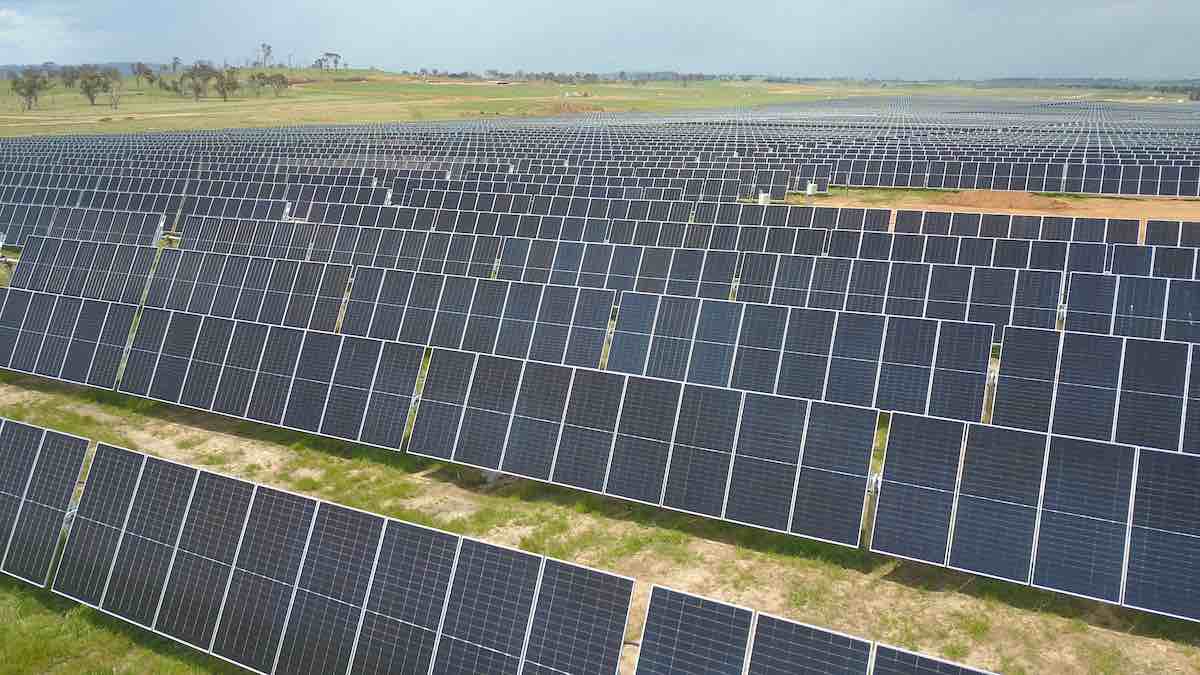The New South Wales state government has secured stunning low prices for major wind and solar projects in its first – and the country’s largest – renewable energy and storage auction that kicks off its transition from coal.
The first of twice-yearly auctions to be held over the coming decade has produced strike prices below $35 a megawatt hour for solar, and below $50/MWh for wind – believed to be the lowest ever in Australia, and surprising given the recent jump in material and supply costs for the technologies.
The Philippine owned renewable energy company Acen Energy has emerged as the biggest winner, securing contracts for its already partially built 720MW New England solar farm, and for the 400MW Stubbo solar farm it is planning in the central west of NSW.
Chinese wind turbine maker and project developer Goldwind was the other winner with its 275MW Coppabella wind project, located west of Yass.
The results were released on Monday, just three days after the country’s oldest coal generator at Liddell was closed for the last time. It also revealed that an eight hour big battery had emerged as the winner of its first long duration storage auction, beating several highly fancied pumped hydro projects.
See: Eight hour big battery trumps pumped hydro in NSW long duration storage tender
The strike prices are for what are known as Long Term Service Agreements (LTESAs), which provide a minimum price for the project’s generation, enabling them in turn to secure finance from banks and equity funders.
Paul Moy, the head of AEMO Services – which is managing the tender process – says the LTESA strike prices are around 40 per cent lower than the levelized cost of energy, and the equivalent Contract for Difference mechanisms used elsewhere.
“They are amongst the lowest prices secured in any similar tender anywhere in Australia,” he said. “This means NSW consumers will pay less for new generation infrastructure.”
The prices are certainly the lowest publicly revealed in any auction, and may only have been beaten by contracts secured by the Queensland government in its series of tenders several years ago.
The Queensland government boasted at the time of prices in the $30s and $40s/MWh, but never revealed the exact contract prices.
Moy says LTESAs would deliver better value for both NSW electricity consumers and project proponents.
“Greater certainty around key aspects of their investment decision will give proponents the confidence to bring projects forward, providing consumers earlier access to clean, reliable and more affordable power,” he said in a statement
“Contract innovations embedded in the LTESA include binding social licence obligations and a new form of financial contract that is designed to be cheaper for consumers than the traditional Contract for Difference used in other schemes.”
The strike price sets a guaranteed minimum price for the projects. If the average wholesale price falls below that level – which in current conditions seems unlikely any time soon – then consumers will pay the difference up to the strike price.
But at the same time they will already be benefiting from low prices given that the average wholesale electricity price in the March quarter was more than $100/MWh.
The win by Acen for the New England solar farm may raise some eyebrows, as the first 400MW stage is largely built and already generating some power and was formally opened by federal energy minister Chris Bowen in March.
However, the auction was open to projects not rated as “committed” by AEMO before November, 2019. The NSW government and its agencies argue that the prospect of the tender will have caused projects like New England to move forward in advance of the results.
This first tender is expected to be followed by another later in May, which may also include a component known as “access rights” and relate specifically to new projects within the Central West Orana zone.
The winners of the tender announced on Monday will not need to buy access rights as they are deemed to be connecting to existing infrastructure.
NSW energy minister Penny Sharp said the results of the auction meant that NSW has now locked in 4.1GW of its legislated 12GW target by 2030.
“NSW is a third of the way there,” she said in a statement, adding that the new projects would be completed by the time the country’s biggest coal generator – the 2.8GW Eraring facility – is currently due to close in August, 2025.
“The transition to clean renewable energy in NSW is essential and underway,” Sharpe said in a statement.
“These projects will fill the gap that will be left with the planned closures of coal fired power stations in the coming decade.
“The Minns’ Government’s focus will be to ensure that the projects are delivered as quickly as possible. This tender has shown how much demand there is to invest in NSW to build renewable energy and it is very welcome that this investment will also support 3,300 jobs over the next 10 years.”











